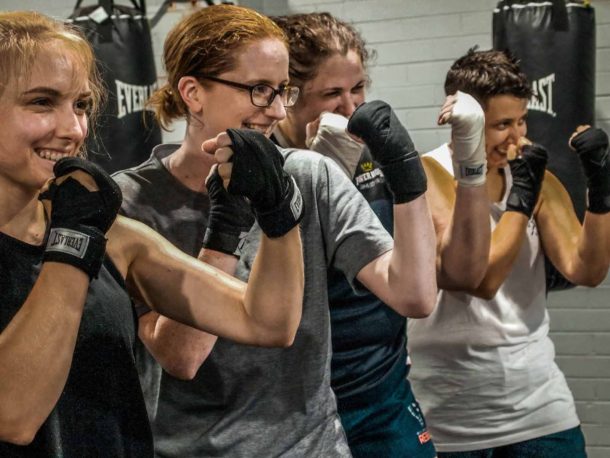Why Make a Program?
You’ve heard that programs work, but why follow one? Following a program in the gym can have numerous benefits, including:
Preventing under/over training
Creating goals
Providing structure when you’re feeling un-motivated
Clearly tracking progress (which is the main driver of muscle growth)
And this is just to name a few.
How to make one that’s right for you
There’s no such thing as a one-size-fits-all program, which is why you need to ask yourself some questions before creating one for yourself.
What is your goal?
You need to have a clear idea of what you’d like to achieve over the duration of your program. Your goals will inform how often you workout and what kind of exercises you do. If building muscle is your primary goal, you might reduce your training frequency and make your workouts longer.
How often will you train?
This is to determine your level of commitment that you’re willing to offer towards your training goals. Everyone has varying levels of lifestyle, work and family obligations that they need to consider which is why it’s important that you make an honest assessment of your personal situation and make a firm commitment to the minimum number of days per week that you can train. If you’re tossing up between four and five days, go with four. It’s better to make a program that will work given your minimum time availability.
Once you’ve decided how many days a week you commit to per week, you can start to organise your training split.
What exercises and movements should you do?
With so many different excercises that can be chosen, it can feel like an overwhelming decision to choose which ones to include in your program. The selection of exercises will depend on your goals. Assuming your goal is tobuild muscle, you definitely want to include compound movements as the basis for your training sessions.
Compound movements are the foundational exercises that use multiple joints and lots of muscle mass. The main movement patterns are pushes (e.g. bench press), pulls (e.g. pullup), hinges (e.g. deadlift) and squats (e.g. barbell squat).
These exercises should consume the majority of your time and effort during your workouts.
If compound movements are the cake, then accessory movements are the icing. These are generally single-joint exercises such as bicep curls and leg extensions that you can do after your compound movements to add some extra stimulus.
How should I track progression during my program?
Progression can be measured in the
following ways:
• Increasing the amount of weight you’re lifting
• Completing more repetitions at a given weight
• Improving the quality of your repetitions
Keep in mind that it’s easier to progress these facets while in a caloric surplus – progress will be slower if you’re in a caloric deficit for fat loss.
I feel like I can handle more – can I add some extra sets?
You can absolutely increase the volume, as long as it doesn’t impede your ability to recover or harm the strength in your lifts. However, keep in mind that there’s a limit to how much extra volume is beneficial – if you’re consistently completing 20+ sets a week on a muscle you’re training twice per week, consider lowering the volume and increasing the frequency and intensity (eg. Instead doing 18 sets over three sessions with higher intensity).
How much cardio should I do?
This depends on your focus – cardio has a plethora of mental and physical benefits, but if your main goal is to gain muscle then cardio shouldn’t be emphasised. We’d suggest having one low-intensity steady state session (LISS) a week and one high-intensity interval session (HIIT). If you prefer to keep your food intake maximised, you can add in an extra 1 – 2 sessions of cardio as necessary. But if you don’t enjoy cardio and would rather have less sessions, make sure your food intake isn’t too high (if your goal is to lose fat). An example of a LISS session would be to perform a form of cardio at an intensity that gets your heart rate up to around 128 – 140 BPM until you’ve burned the desired number of calories. An example of a HIIT session would be as follows:
• 5 minute warmup
• 20 second sprint
• 40 second power walk
• Repeat the sprint and power walk one
after the other ten times
• 2-3 minute cool down jog
This is just a guideline – HIIT just needs to have
something with maximal intensity followed by
a cool-down exercise.
How do I organise my training days and rest days?
The organisation of your rest and training days are flexible – what’s important is that you consistently reach the weekly training volume of the program and get enough rest to maintain it. We’d advise to prioritise your weaker muscles at the start of your rotation – for example, in an upper/lower split, it’d be a good idea to start your rotation with a lower body session if that’s your weaker muscle group. In terms of rest days, if you’re a beginner or an intermediate it’s advised to have at least one whole day without any lifting or cardio.
How often should abs be trained?
Abs recover quickly, so around three times a week is recommended. It’s a good idea to train abs on days that you have plenty of energy at the end of your workout.
How long should I follow my program?
Like with most programs – stick to it as long as you’re making progress. This will vary greatly from individual to individual, so monitor your progress and stick to it until you feel like you’re plateauing.
How do I know if I’m actually making progress?
The easiest way to know if you’re making progress is through the numbers in your logbook and the mirror. The scale is an important tool, but if your goal is fat-loss, the change is visual – so gauge both what you see on the scale and in the mirror. In a good caloric deficit, weight loss for men should be around 450-900 grams per week and 200-250 grams per week for women.
Should I have deload weeks?
After weeks of consistent, heavy training, it’s common to experience a few consecutive days of feeling weak, exhausted and unmotivated. If this occurs, you can have a few days off, or take a deload week. Central nervous system recovery, reduced risk of injury and mental and physical recovery are the main benefits of a de-load. To do a de-load, simply follow the program as you were but with 50-60% less weight on each exercise and half the sets. You can alternatively just not train for a few days – but any more than 5-6 days without training isn’t advised. Generally speaking, de-loads are required more often when following a program during a caloric deficit. Monitor how you’re feeling and don’t push yourself too hard if you’re overly fatigued.
That’s a lot of information to digest – constructing and following your own program is a process that takes time to learn. You’ll make mistakes along the way and learn from them – the main thing is consistency. A poor program followed properly is better than a proper program followed poorly.
Happy training!



